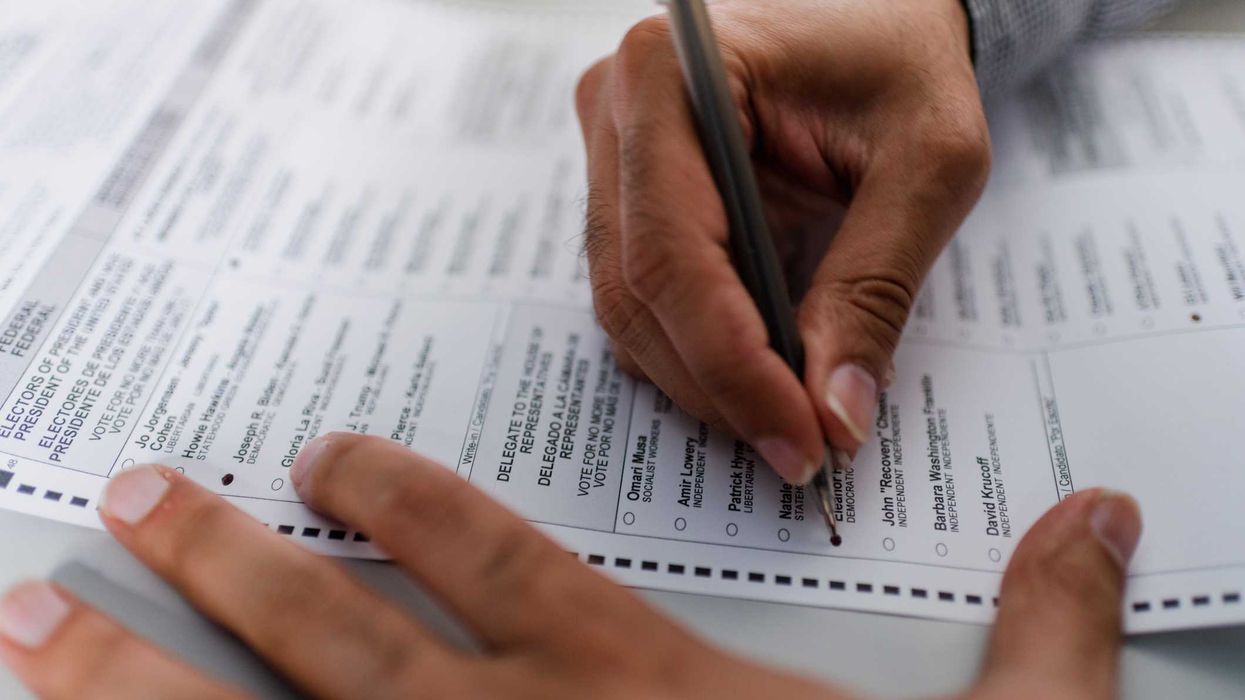Anna Kellar is the Executive Director of the League of Women Voters of Maine and Maine Citizens for Clean Elections. Jason Grenn is the former Executive Director of Alaskans for Better Elections.
Over the last several weeks, politicians, pundits, and activists on both sides of the aisle have expressed great concern about bipartisan political group No Labels’ push to run a third-party ticket in the 2024 presidential race. Some have shared similar concerns about progressive Cornel West running as a Green Party candidate.
Their concern that these candidates could “play spoiler” in 2024 makes sense. After all, as Republicans learned in 1992 and Democrats learned in 2000 and 2016, even a few thousand votes going to a third-party candidate in a single state could swing the election.
Yet, our home states of Maine and Alaska won’t have this concern. We’ve figured out the “spoiler problem.” We use ranked choice voting.
Ranked choice voting is more than just a technical fix that eliminates “spoilers.” That’s because it does so in a voter-friendly way – by giving us more choices, rather than trying to limit choice by shaming or even suing potential third-party candidates off the ballot.
With ranked choice voting (RCV), voters can rank candidates on the ballot in order of preference. They rank their favorite candidate as their 1st choice, their next favorite as their 2nd choice, and so on. If no candidate wins a majority of voters’ 1st choices, the candidate with the fewest votes is eliminated. Voters who ranked the eliminated candidate as their 1st choice have their vote count for their 2nd choice. The process repeats until a single candidate has a majority.
In Maine and Alaska, that means voters can support independents and third-party candidates knowing that their vote won’t be “wasted” on a longshot. And if their favorite doesn’t have a chance to win, they can still express their preference between the Democrat and the Republican – instead of helping throw the election to their absolute least-favorite candidate.
Of course, many voters will still rank a Democrat or a Republican first on their ballot. This isn’t about supporting or helping any one type of candidate. It’s about ensuring election outcomes actually reflect the will of the voters – instead of a numbers game based on how many Green or No Labels or Libertarian candidates run for president. Moreover, in RCV elections, the winning candidate actually has to win a majority of votes.
Maine became the first state to use RCV for a presidential election in 2020, and Alaska will join them next year. It’s no surprise that Oregon may soon vote to do the same – and the No Labels conversation should only encourage more places to follow suit.
RCV is growing across the country, now used by about 13 million voters across over 50 cities, counties, and states. Polling shows that everywhere RCV is used, voters like and understand it. After all, ranking is common-sense stuff: If you go to the grocery store and they’re out of whole milk, you buy your 2nd choice instead – maybe 2 percent. By comparison, under our current system, if the store is out of whole milk, you’re out of luck. The other shoppers get to pick for you. Enjoy your anchovies!
For too long, partisans have tried to solve the spoiler problem by threatening us all with anchovies. They try to limit voter choice – attacking independents and third-party candidates, and blocking voters from even having the chance to support them. But whether you like the parties or not, that’s fundamentally undemocratic. It’s also increasingly tone-deaf, at a time when voters across the country are frustrated and clearly looking for more than two choices.
Voters are smart, and they’re getting wise to the fact that there’s a long-term solution out there – and that Maine and Alaska are already using it.
If more states use ranked choice voting in presidential elections, we could eliminate the “spoiler problem” once and for all, and give voters the true choice that they deserve – and that a functional democracy requires.


















